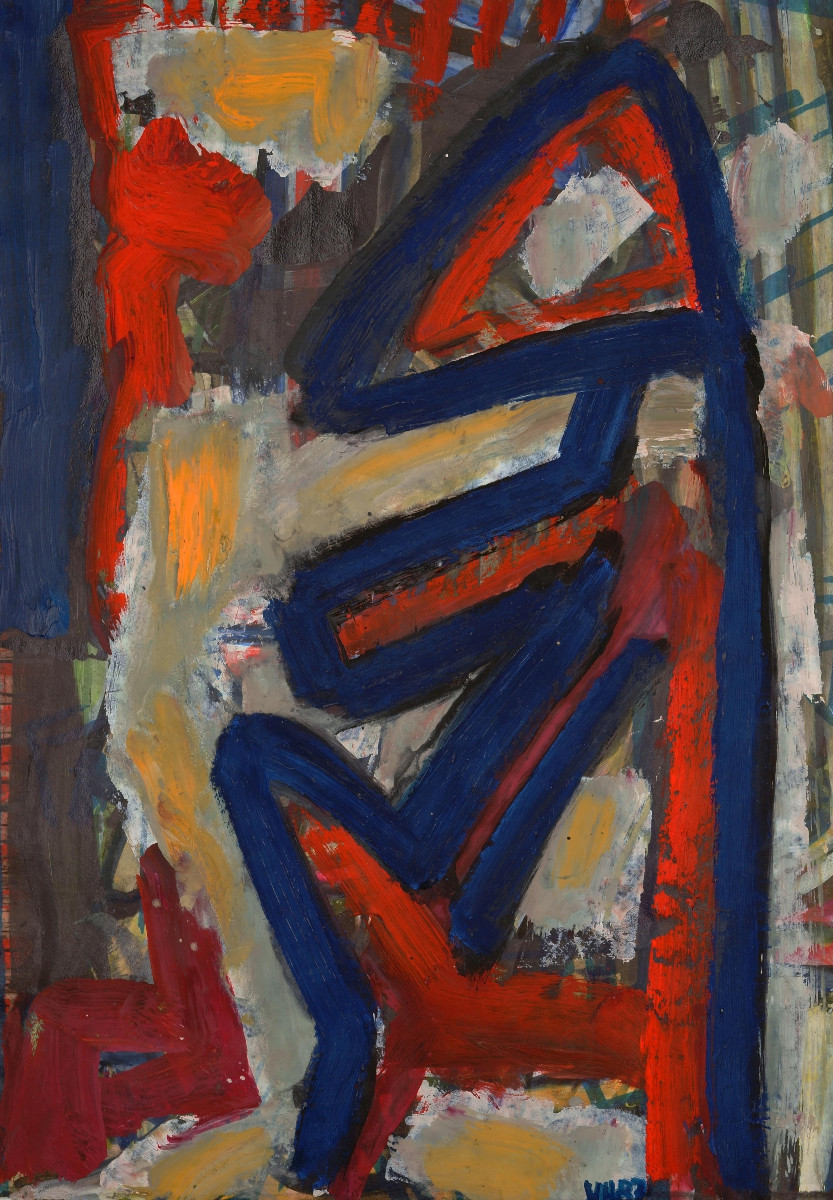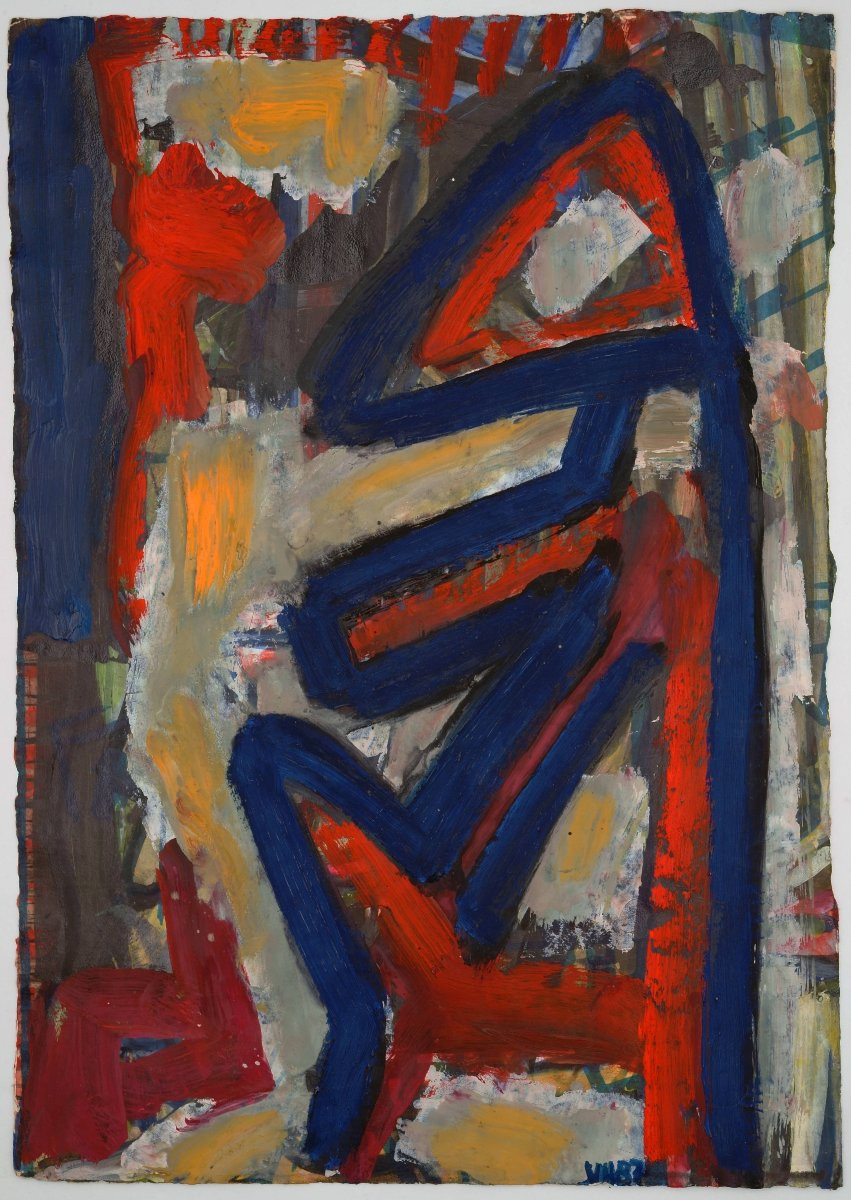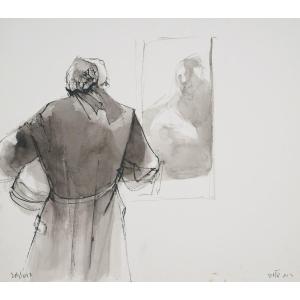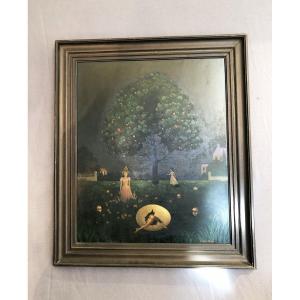- in good condition
- Abstract figuration -
In the formal language of wild abstract expressionism, the "Rare Animal" sits like an idol amidst material color energies. It appears to have emerged from this color landscape and to dominate it. The strong blue lines and the orange line structure inscribed in it form the most intense color contrast in the picture, which also manifests figuratively. The title is an ironic commentary on non-figurative figuration that plays with the viewer's expectations.
About the artist
Veit Hofmann, the son of artist Werner Hofmann, grew up in the Künstlerhaus Dresden-Loschwitz. There, he was influenced by fellow residents Helmut Schmidt-Kirstein, Wilhelm Lachnit, Hermann Glöckner, and Hans Jüchser. After completing an apprenticeship as a book printer, Hofmann studied at the Dresden Academy of Fine Arts from 1967 to 1972 under Gerhard Kettner and Herbert Kunze. There, he learned various printmaking techniques. Since then, he has worked as a freelance artist. Accompanied mostly by his artist friends Helge Leiberg, Stefan Plenkers, and Rainer Zille, Hofmann undertook numerous study trips to Eastern Europe. In 1985, Hofmann moved back to the Künstlerhaus Dresden-Loschwitz, where he developed a collage technique involving the tearing up of his own older works. In 1988, he and Otto Sander Tischbein established telephone art, in which the two artists created pictures in parallel during telephone conversations. Around this time, Hofmann began an ongoing collaboration with graphics publisher Ulrich Grimm, resulting in the production of numerous artist books. In 1992, Hofmann acquired a studio in Pannonhalma, Hungary, where he worked intensively on large-format woodcuts. In 1993, Hofmann and Max Uhlig founded the fund "Künstler helfen Künstler." In addition to paintings and prints, Hofmann created musical installations and stage sets.


































 Le Magazine de PROANTIC
Le Magazine de PROANTIC TRÉSORS Magazine
TRÉSORS Magazine Rivista Artiquariato
Rivista Artiquariato